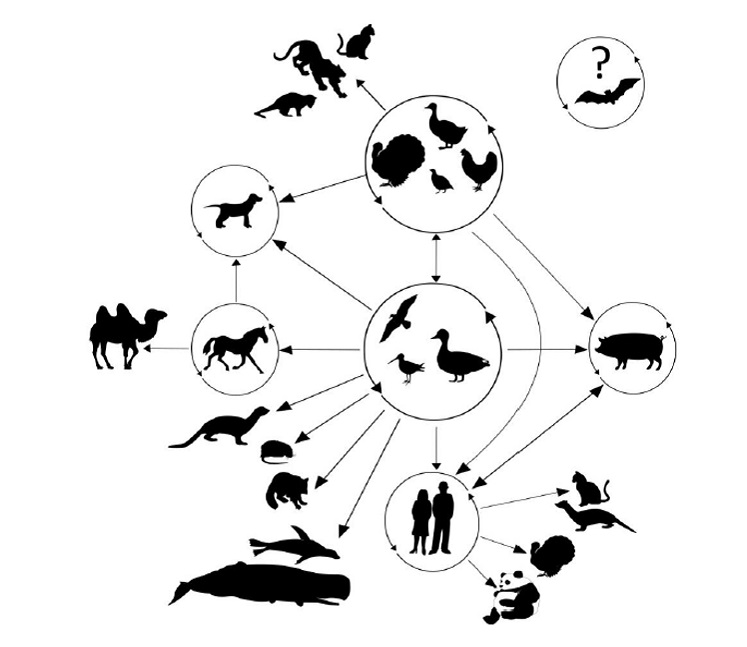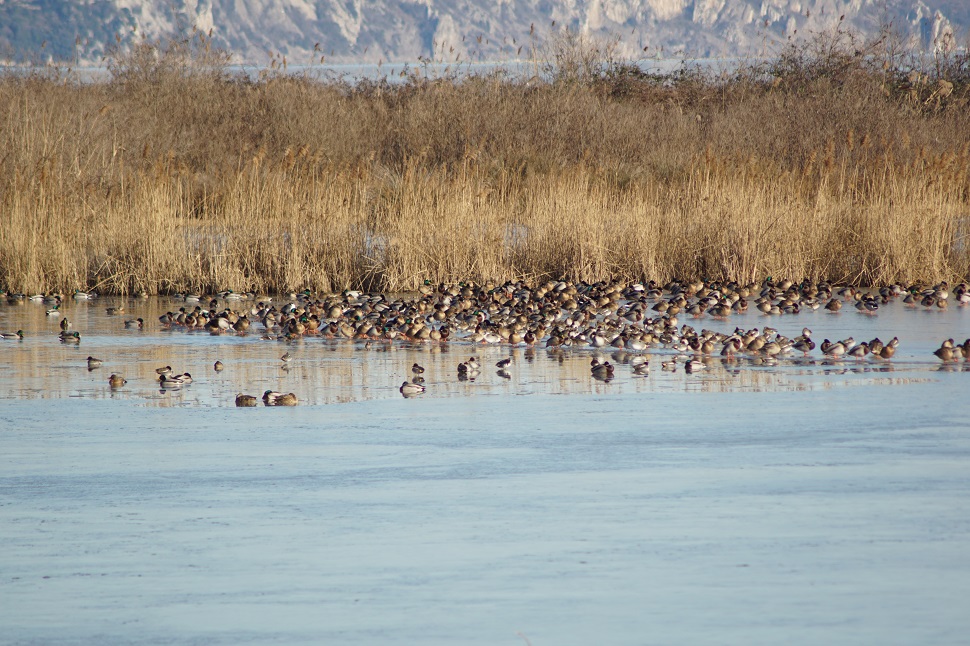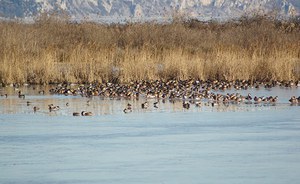Wild waterbirds and type A influenza
Researchers from the University of Bologna and ISPRA collaborate in writing an editorial which comments on recent research findings about the ecology and interspecies transmission mechanisms of type A influenza viruses.
Among the currently recognized influenza viruses, the type A viruses circulate in both humans and other animal species. Due to genome plasticity, influenza A viruses can rapidly acquire mutations underlying interspecies transmission (spillover). In this context, wild waterbirds play the central role of natural reservoir of the viral gene pool. In particular, influenza A causes recurrent seasonal epidemics and periodic pandemics in humans, such as the so-called "swine flu" due to the emergence in 2009 of a reassortant virus, with genes of animal and human origin.

Examples of interspecies transmission of type A influenza viruses. Central simple arrows indicate occasional spillovers of avian viruses from wild and/or domestic species of birds. Double-headed arrows indicate possible bidirectional virus transmission events. Circular arrows include species in which certain viral subtypes are well adapted and which in turn could trigger further chains of transmission. The role of bats has not yet been well defined. Reprinted from “Ecology of Avian Influenza Viruses in Siberia” with permission from Nova Science Publishers Inc.
Natural evolutionary strategies have long allowed the type A influenza viruses to perpetuate in avian reservoir species as low pathogenic infections that can occasionally evolve in poultry into a highly pathogenic disease, posing a potential risk to animal and human public health. In recent years, characterized by rapid climatic and environmental changes, a new scenario has been observed with the increasing involvement of wild birds in highly pathogenic avian influenza caused by viruses that emerged in Southeast Asian poultry and subsequently spread mainly through migratory birds in many areas of Asia, Europe, Africa, and the Americas, causing unprecedented numbers of deaths in wild avifauna and increasing viral spillover events in various species of wild carnivores−with potential impacts on biodiversity conservation−and devastating outbreaks in commercial and backyard poultry. In humans, the related risk of infection with viruses currently circulating in Europe remains low for the general population and low to moderate for occupationally or otherwise exposed people.
Given the complexity of ecosystem connections, through content analysis of 6 articles from a special issue recently published in Microorganisms, this editorial aims to contribute to the knowledge of ecological factors underlying the intra- and interspecies transmission dynamics of these RNA viruses by commenting on direct (virus detection) and indirect (detection of specific antibodies) evidences of influenza A virus infections in avian and mammalian species, including bird-exposed workers.
The Editorial, published in the international journal Microorganisms is freely available or downloadable under an Open Access license.

Wild waterbirds play the ecological role of natural reservoir of influenza A viruses (Photo by Mauro Delogu)

